Continuous improvement is a type of innovation that involves analyzing the performance of different parts of your business, identifying areas for improvement, and making incremental changes to your products, services, processes, business models, etc., that move your company in a forward direction.
These can come in different shapes and sizes, for example:
Each time consumer-facing brands like Nespresso or Apple release a new coffee pod flavor or smartphone, they’re incrementally improving their existing product line.
Or, let’s say a company performs a time audit and finds its accounts payable team spends ten hours a week manually processing invoices; they might invest in automation software to free up this time and improve their internal processes.
In order to invest in and implement these types of innovations, innovation managers need to:
Ask people inside and outside the company to submit ideas. This allows innovation managers to draw insights from diverse perspectives and understand which parts of the business can be improved. For example, customers can share features they’d like the company to release, while employees can highlight any internal inefficiencies.
Encourage everyone to improve each other’s ideas. This step is essential because it gets people with various skill sets reviewing ideas and finding potential sticking points. For instance, the legal team may find that an idea isn’t possible due to specific regulatory requirements. Original authors can then edit their ideas around this feedback.
Test the impact that ideas have on the company. Innovation managers don’t want to launch every single idea they collect, just the ones with the most impact. As such, teams inside the company test ideas’ impact by completing specified validation tasks (building a business case, building a prototype, etc.).
Launch the idea. Once innovation managers have identified ideas with the most potential, they can launch them by assigning certain tasks to teams in the company. For example, the procurement team could source materials, or the R&D team could build the full product. This way, everyone knows what’s required of them to launch an idea.
Analyze the success and failures of previous projects. It’s important that innovation managers keep a record of past ideas and implementations so they know what’s already been suggested or tested, which ideas they’ve successfully launched, and past projects’ impacts. They can also examine project workflows to pinpoint inefficiencies or learn more about challenges with past projects. They can then use these insights to launch innovations more efficiently in the future.
To support these steps, many innovation managers turn to dedicated innovation management software because it allows them to source ideas for improving company products, services, and processes.
Innovation management software also offers the workflows required to test ideas' impact. Innovation managers can push ideas through these work stages so they know which to pursue and which to discard.
Finally, effective innovation management software has project and portfolio management features, where innovation managers can plan the launch of the most impactful ideas. They can also analyze ideas they pursued in the past, see which ideas benefit the company and which ones don’t live up to expectations, and learn from these experiences going forward.
So, in an effort to help innovation managers choose the right platform to manage the continuous improvement process, we compiled a list of the five best innovation management tools.
We start by discussing our platform, InnovationCast, and how we designed it to support the steps above. Then, we cover HYPE Innovation, Wazoku, Brightidea, and Ideanote.
1. InnovationCast
Innovation Management Software That Supports Continuous Improvements
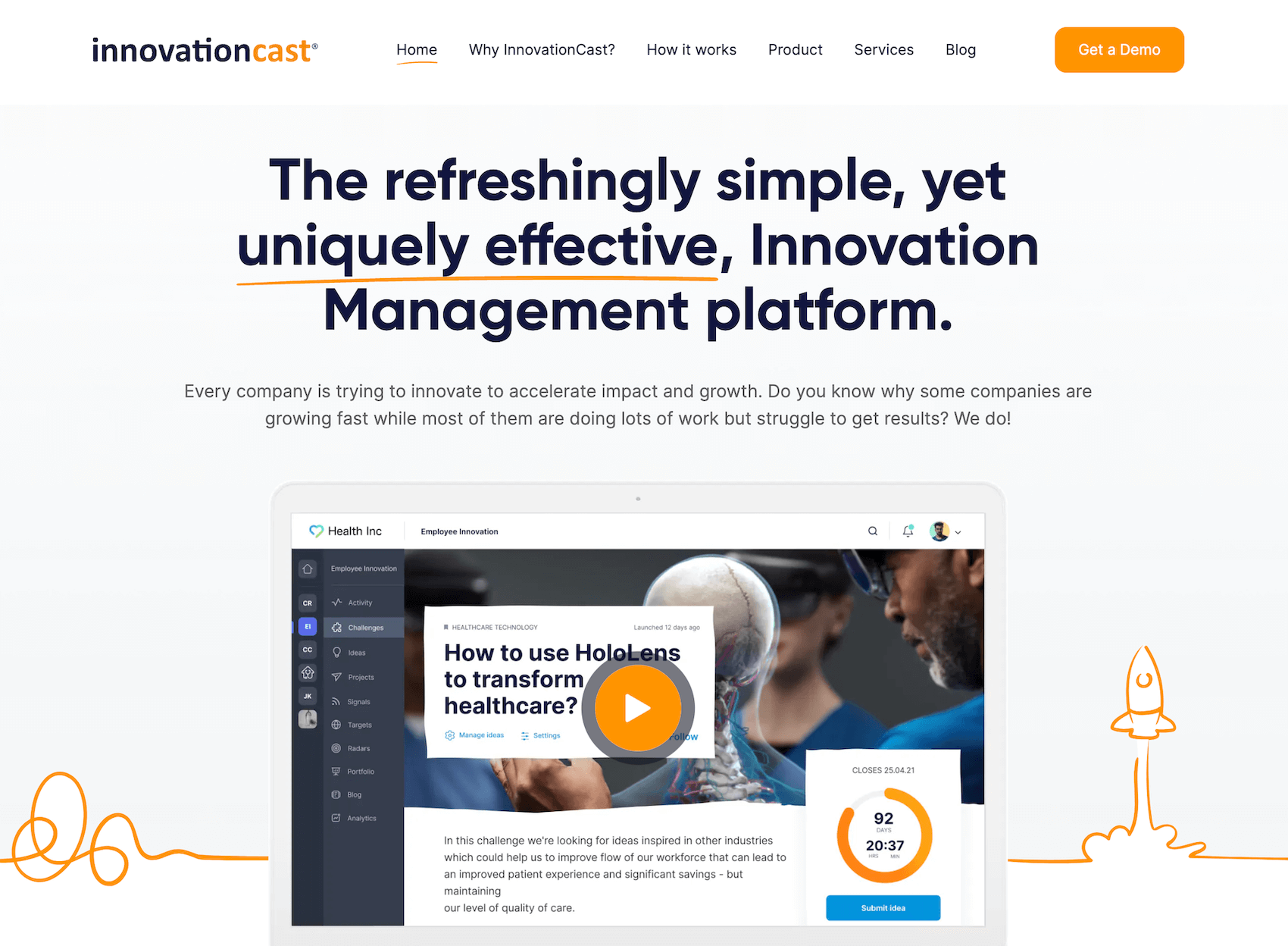
InnovationCast is a customizable innovation management platform that helps innovation teams onboard users from inside and outside the company while encouraging them to share their thoughts on where the company can improve.
By using our out-of-the-box continuous improvement workflow, innovation managers can narrow in on the best innovation strategies for their business. This workflow guides them through the steps needed to learn more about an idea's potential value and the resources required to launch.
On that note, innovation managers can use our project manager to implement the most promising, potentially impactful ideas. They can do this by creating implementation tasks for various teams to complete, assigning deadlines so everyone knows when tasks are due, and monitoring the progress of each team to identify any delays.
They can also use our portfolio manager to review previous projects, track what ideas were already implemented, and analyze why specific projects succeeded while others didn’t meet expectations.
How InnovationCast Helps Managers Collect Ideas
InnovationCast has two features that can help innovation managers gather insights on how to improve different areas of the business:
Category-based “Always On” — this allows users to submit ideas about the various goals of the innovation strategy 24/7.
Innovation Challenges — these challenges allow innovation managers to collect ideas on more urgent or potentially valuable priorities.
Users Can Submit Ideas 24/7 with "Always On"
"Always On" is an open idea collection feature that lets users submit ideas on specific topics of the innovation strategy.
Innovation managers create accepted categories for ideas — around the different areas of the innovation strategy — and require users to bucket their submissions. For example, they could have categories for product ideas, internal process ideas, and partnership ideas.
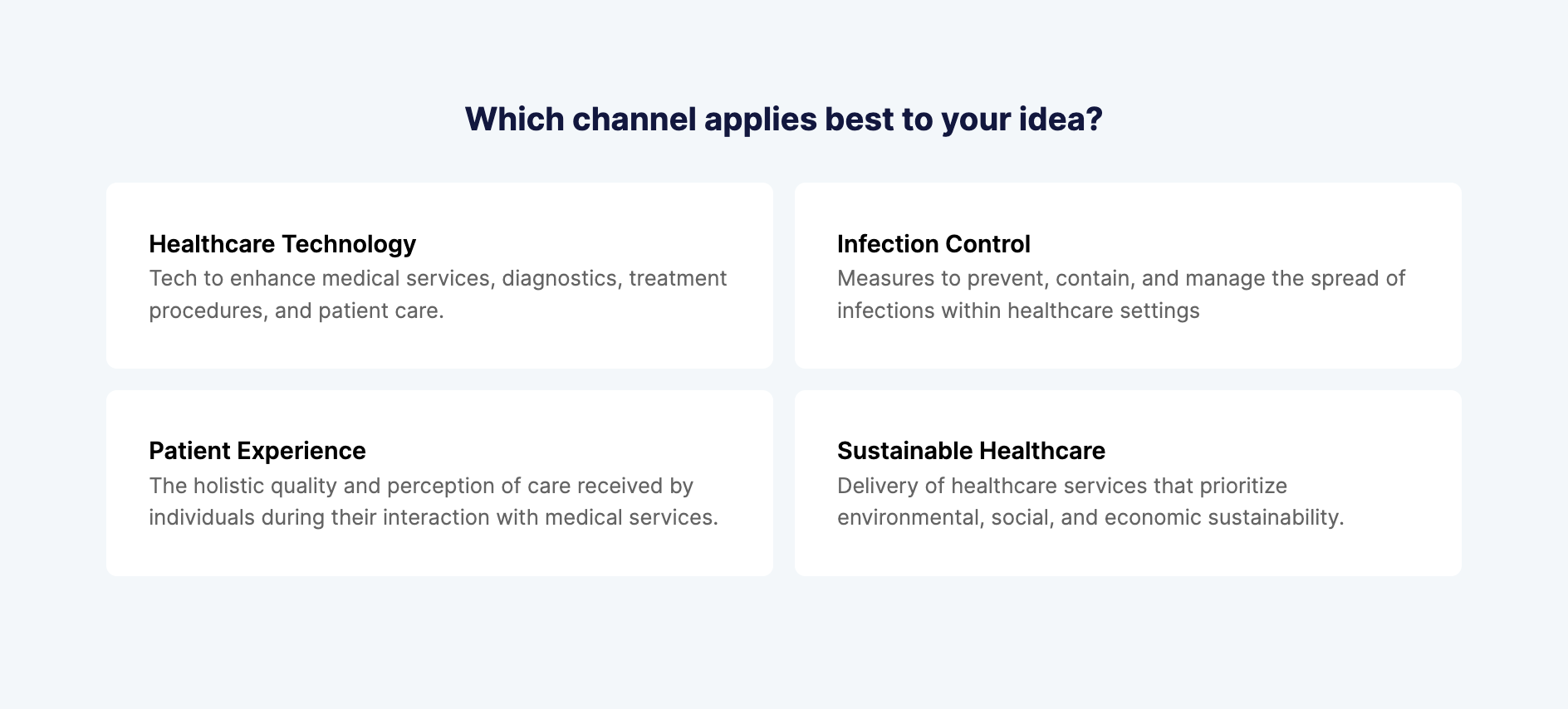
From here, innovation managers can create custom-tailored submission forms asking users to elaborate on their ideas. Users can further explore the impact of their idea, the resources it would require to launch, potential concerns, and how those concerns could be addressed.
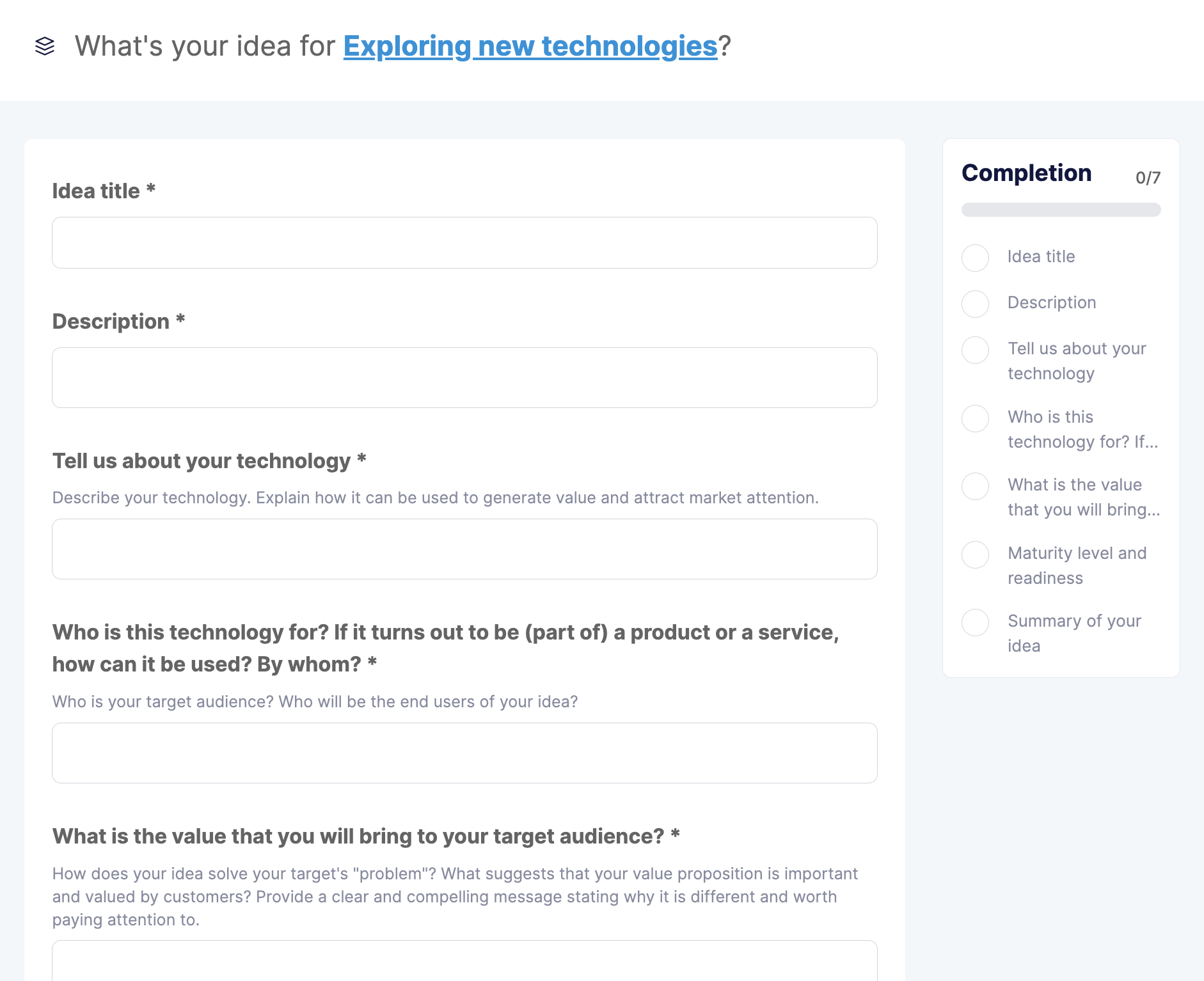
For example, say a coffee company that sells coffee pods and machines is looking to improve in three main areas:
Launching new coffee pod flavors
Adding features to their coffee machine
Implementing a customer rewards program
They could call users to submit ideas via “Always On” and ask them to bucket their ideas into one of these three categories. Then, innovation managers can ask users to discuss their ideas more thoroughly. If a user suggests launching a cinnamon-flavored coffee pod, innovation managers can ask the following questions:
Where did you get inspiration for this new flavor?
To your knowledge, have customers requested this flavor? Approximately how many customers have you heard ask for this new flavor?
What are the potential downfalls of this idea? What roadblocks could we run into while launching this new flavor?
This way, employees, managers, stakeholders, and outside users have the initial information required to assess an idea's potential impact properly.
Innovation Managers Can Collect Ideas on Specific Priorities with Challenges
If innovation managers are looking for ideas on more urgent priorities, such as improving operational cost efficiency or reducing the downtime of company machinery, they can create Innovation Challenges.
These are postings that focus users on specific innovation needs. Innovation managers can add descriptions and additional resources to each posting (such as videos and articles) to help users understand the priority in more detail.
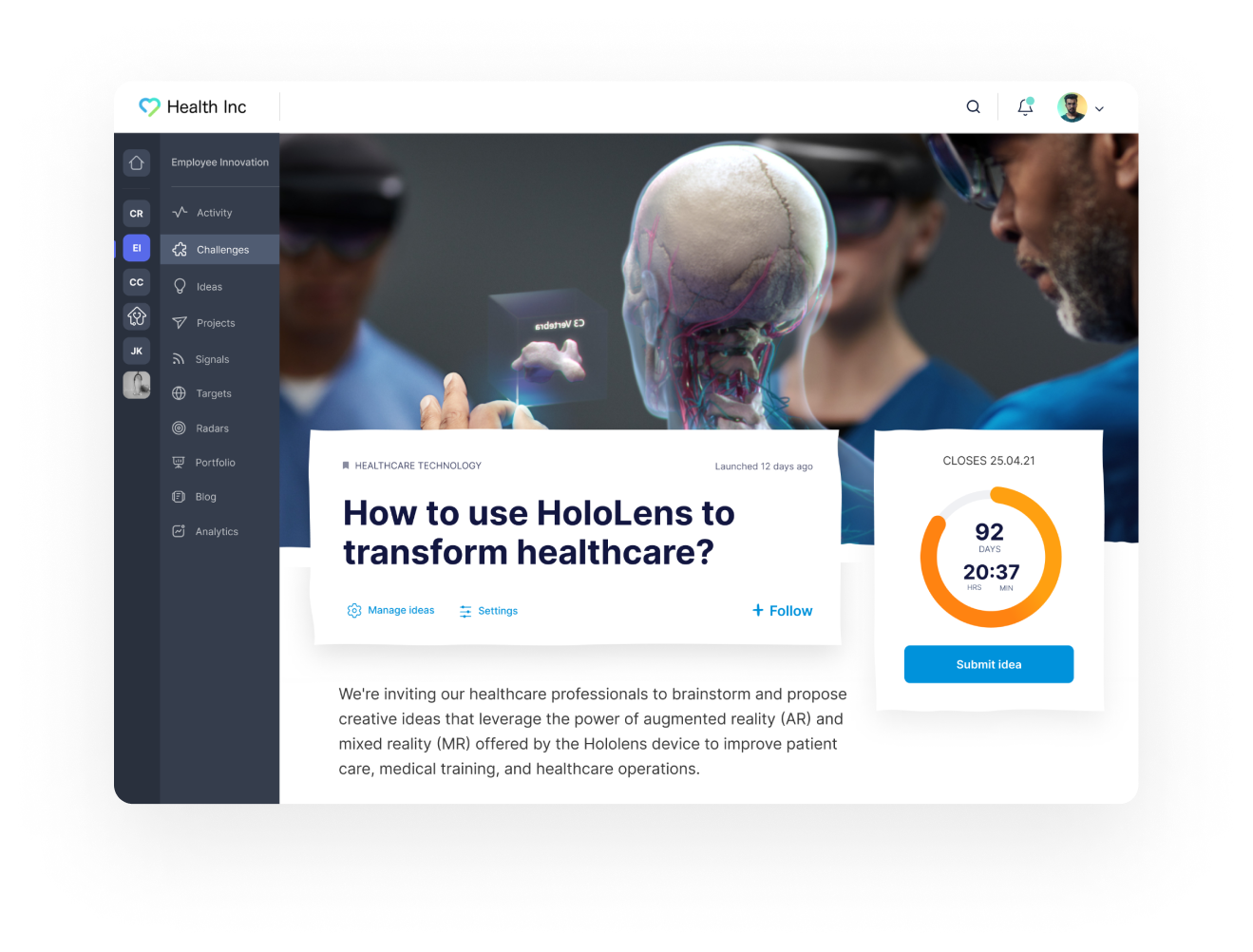
Each challenge has a deadline, so users are encouraged to submit ideas quickly, which helps innovation managers collect helpful ideas in a short timeframe.
Signals
We also added a Signals feature to InnovationCast, allowing users to post about competitor updates, market insights, new startups, upcoming trends, and other “industry happenings”. Colleagues can see the latest postings when logging into InnovationCast.
We find that this centralized sharing can ignite the creation of new ideas as everyone discusses how certain news impacts the company.
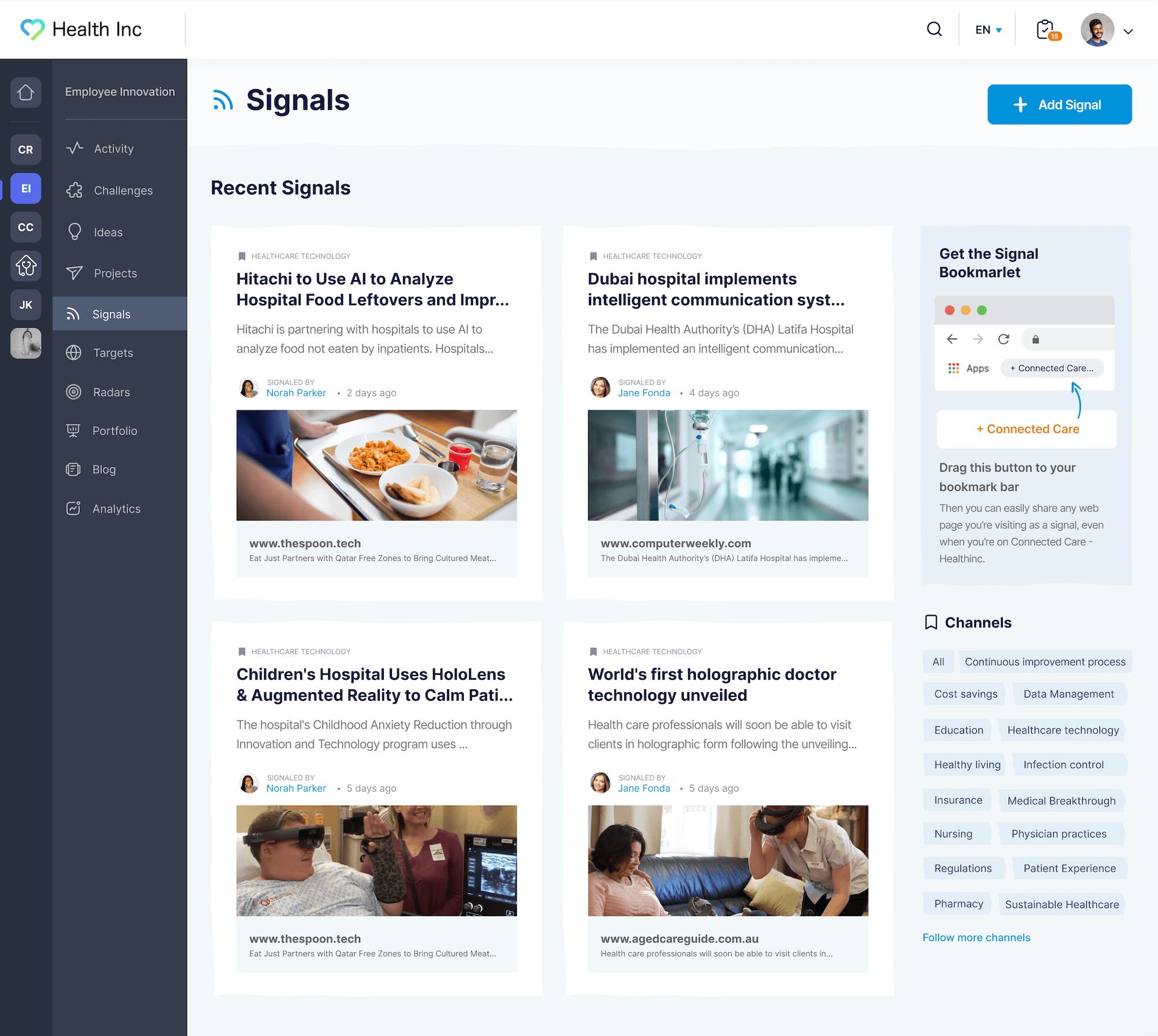
Staying with the coffee pod example, say the innovation department is focused on launching new flavors of coffee pods. However, an employee sees a competitor launch a coffee pod made from eco-friendly materials, generating record sales.
The employee could share this news with the rest of the organization, and everyone can discuss whether they should do something similar. If users decide that launching an eco-friendly coffee pod is a good idea, the innovation department can start evaluating the idea and required resources.
Read more: 7 Strategies to Get Innovative Ideas from Employees
How InnovationCast Helps Managers Open Up Idea Feedback
It’s a best practice to open up idea feedback and gather opinions from different perspectives inside. This way, users with different skill sets can see what others suggest and use their expertise to refine ideas.
When a user logs into InnovationCast, they can view all submitted ideas on their dashboard.

They can also vote on what they think about an idea — if it "Looks great," "Needs work," or they are "Undecided."
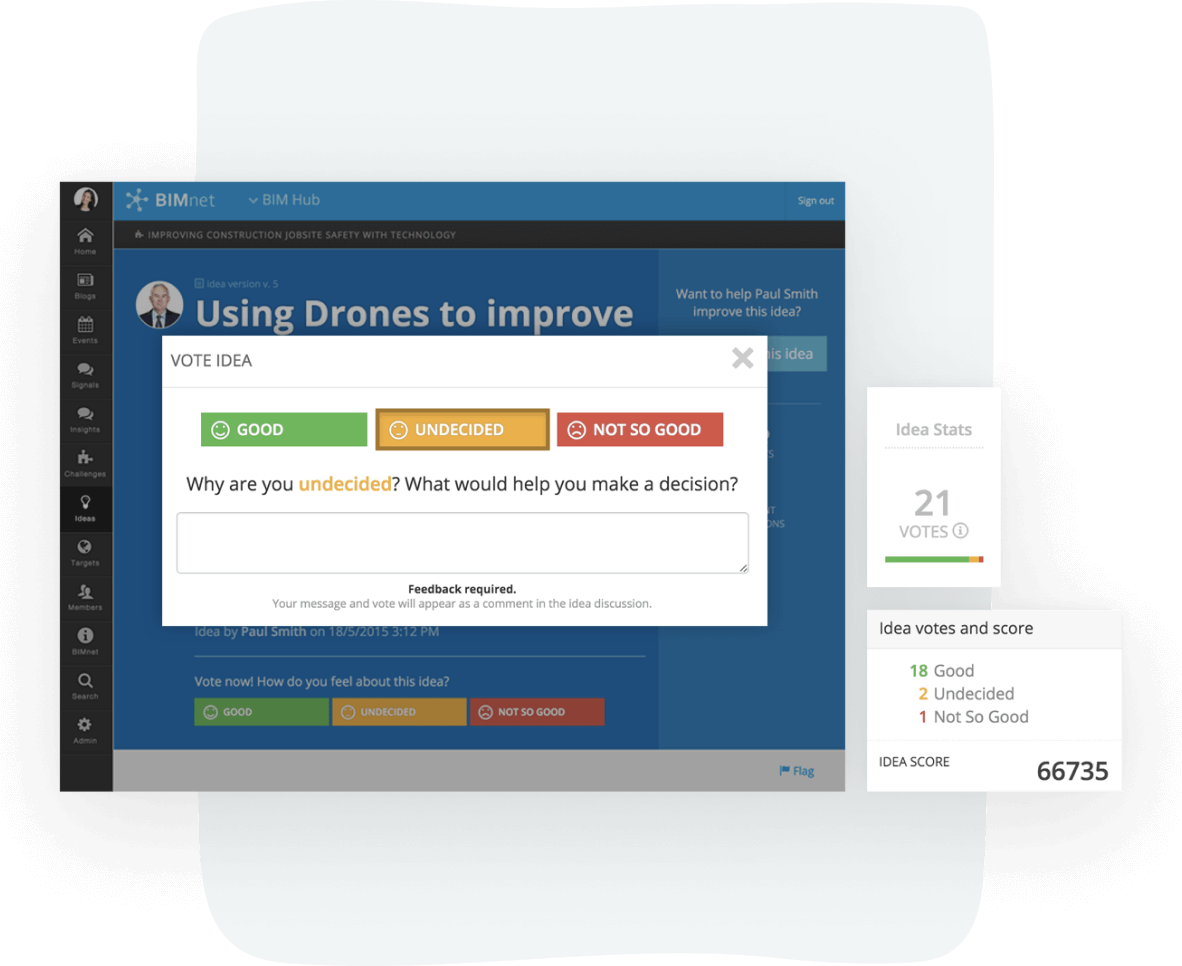
InnovationCast then prompts users to explain their vote. Why do they think the idea looks good (or not so good)? If a user is undecided, they are encouraged to share what additional information they need to vote on the idea.
Original idea contributors are notified of this feedback and can edit their ideas with other users.
This creates a culture of improvement in which ideas aren't siloed in the hands of a few innovation managers. Everyone can view ideas, share their thoughts on them, and provide feedback to the original authors.
Read more: How to Create a Collaborative Innovation Process and Network
How InnovationCast Helps Managers Test and Implement Ideas
Once users have refined ideas, innovation managers test their impact on the company to understand which ones hold the most value and decide on which ideas to launch.
Innovation managers usually do this by pushing ideas through evaluation workflows. Evaluation workflows vary by the type of idea you’re assessing — for example, product ideas will require a different set of assessment tasks vs. changing business models. Riskier ideas will require deeper assessment than ideas you’re familiar with or have experience managing previously.
Out-of-the-Box Continuous Improvement Workflow
Continuous improvements — because they improve your existing offerings and processes — don’t typically require in-depth or lengthy evaluation. We’ve built InnovationCast with a pre-set workflow to support continuous improvements, and it contains the primary steps most teams follow to validate and prioritize innovations.
However, this workflow is completely customizable, so you can add, remove, and rearrange steps to better fit your processes. (You can also add more workflows to support different types of ideas.)

Innovation managers can then use the stage-gate approach to pass ideas through these workflow steps. Ideas either get a “yes” or “no” at each stage until they are launched or tabled.
For example, if innovation managers are launching a cinnamon-flavored coffee pod, they can validate its potential using the following workflow:
Build a business case — Innovation managers establish the why behind launching the new coffee pod. This may be because many customers asked the customer support team to launch a cinnamon coffee pod, and the company believes that doing so can boost sales.
Survey and interview customers — Innovation managers try to get a deeper understanding of whether there’s actually demand for this product or if it’s just a select few customers who want a cinnamon coffee pod. To learn more, they could conduct surveys and interviews with customers.
Develop a prototype — Innovation managers call the R&D department to develop a couple of cinnamon coffee pods, invite customers to do taste tests, and provide feedback on their flavor profile and packaging design.
If the coffee pod receives a yes at each stage of the workflow, innovation managers can move it forward to launch. If it gets a no at one of the stages — maybe because taste tests showed customers didn’t like the cinnamon flavor — innovation managers can decide on the next best steps or table the idea.
Read more: Best Practices to Evaluate Innovation Ideas
Project and Portfolio Manager
After innovation managers have tested the impact that ideas have on the company, they can use our project manager to launch them.
Inside this project manager they can plan out implementation tasks and assign team members to pitch in. They can then add deadlines to each task so that teams know when to have them ready.
From here, innovation managers can track the progress of these tasks. If there are any delays, they can readjust deadlines or get involved to see what’s stalling workflows.
For example, if the innovation department has validated the impact of the new coffee pod and believes it’s worth launching, they can call:
The procurement department to source materials from suppliers at scale.
The R&D team to launch the new coffee pod flavor.
The marketing team to create and run new ad campaigns.
Additionally, with our portfolio manager, innovation teams can view a historical record of all previous ideas and past implementations, allowing them to track ideas they have already pursued and their impacts. For example: what was successful, how it impacted the company, and what they passed on or tabled and why.
They can analyze the implementation steps of these projects in more detail to understand why certain changes weren’t successful, any mistakes that may have caused this, and how to tweak their current workflows to implement ideas more efficiently.
Using the coffee pod example above, say innovation managers find that certain flavors didn’t generate sales once they hit shelves because they were only conducting a handful of taste tests or sourcing loyal customers for taste tests. These customers simply happened to like the new flavor, but it wasn’t an accurate reflection of a larger market’s feelings.
In this case, they know to conduct more taste tests or find a new way to source participants for taste tests before launching future flavors.

Tools That Encourage Users to Participate in Continuous Improvement Efforts
User engagement is the foundation of a company’s continuous improvement efforts. Without users submitting and refining ideas, there’s no innovation program.
Understanding this, we designed InnovationCast with two features encouraging users to participate in continuous improvement efforts: onboarding emails and a badges & rewards program.
Onboarding Emails
To help innovation managers train users on how our solution works, we added onboarding emails to InnovationCast. These onboarding emails prompt users to create a login and include tutorials on how to navigate InnovationCast and use the various features.
This is especially helpful when onboarding remote teams or outside users: you don’t have to manage training yourself or field questions about the software — users can learn the software easily, on their own time, and join innovation efforts.

Additionally, our platform also sends automated emails to keep innovation efforts at the top of users’ minds and remind them to stay involved. We provide a series of email templates you can customize and schedule — you could create newsletters about current initiatives or recent implementations, but you can also use these emails to:
Provide tips on how to participate (e.g., how to submit more insightful ideas or feedback).
Notify users of new challenges so they can submit ideas before deadlines close.
Nudge users to submit ideas when their accounts are inactive for an extended period.
Incentivize users to submit ideas by sharing details about new rewards (more on this below).
Employee Badges & Rewards
We designed InnovationCast with a badges and rewards system that encourages users to continue submitting ideas on how the company can improve.
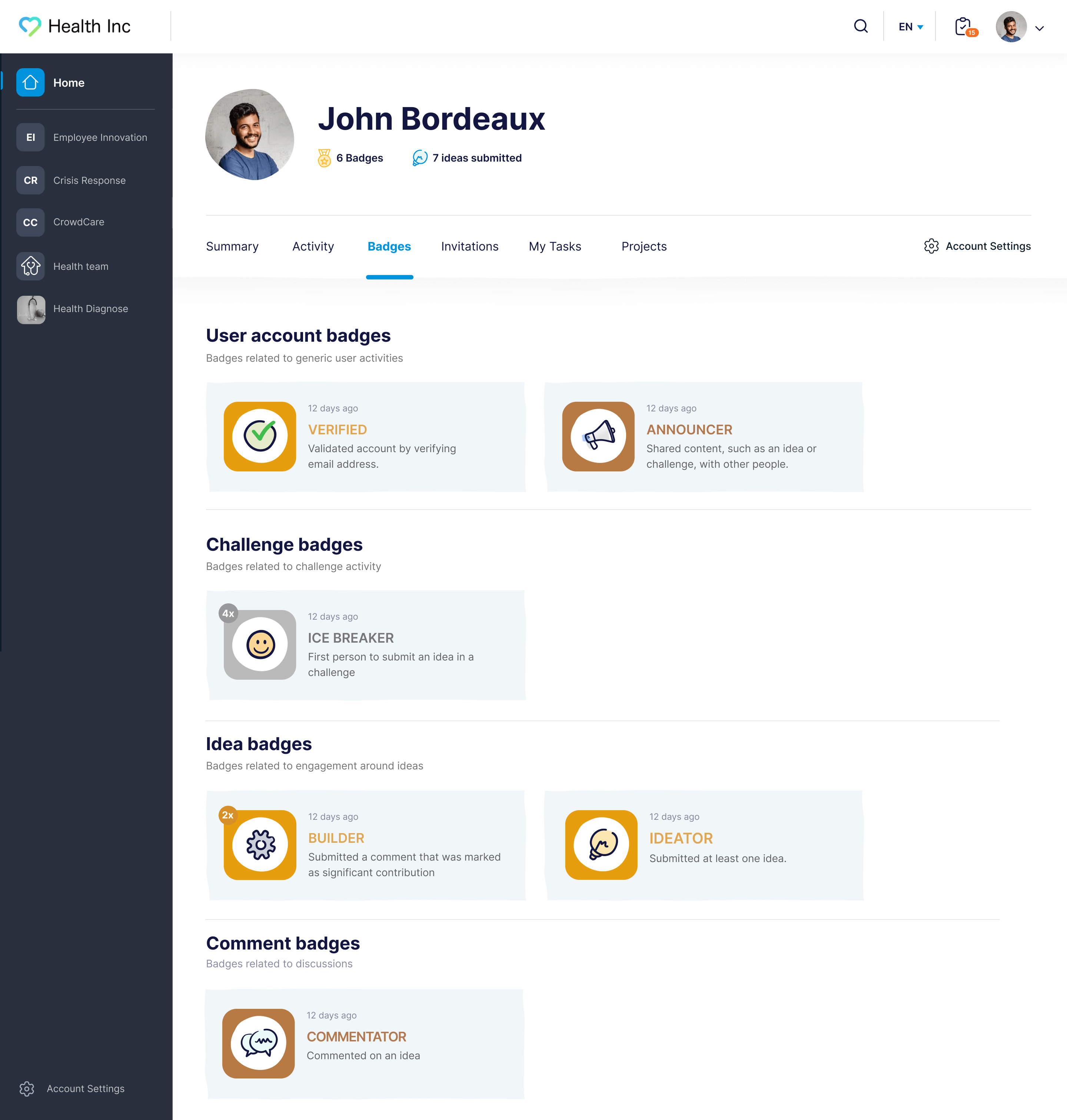
When users submit high-quality ideas or leave feedback on others’ ideas, innovation managers can reward them with badges that are publicly displayed on their profiles for other users to see.
Innovation managers can also assign users points when they perform specific tasks and allow them to redeem these points for cash prizes or other rewards.
Users can see what prizes are available (cash prizes, PTO, concert tickets, etc.) and how many points are required to redeem them. They can then save up points to redeem their favorite reward.
Read more: How to Encourage Innovation in the Workplace
Book a Free InnovationCast Demo
Schedule a free demo with our team to learn more about how InnovationCast can help you continuously improve company products, services, and processes.
2. HYPE Innovation
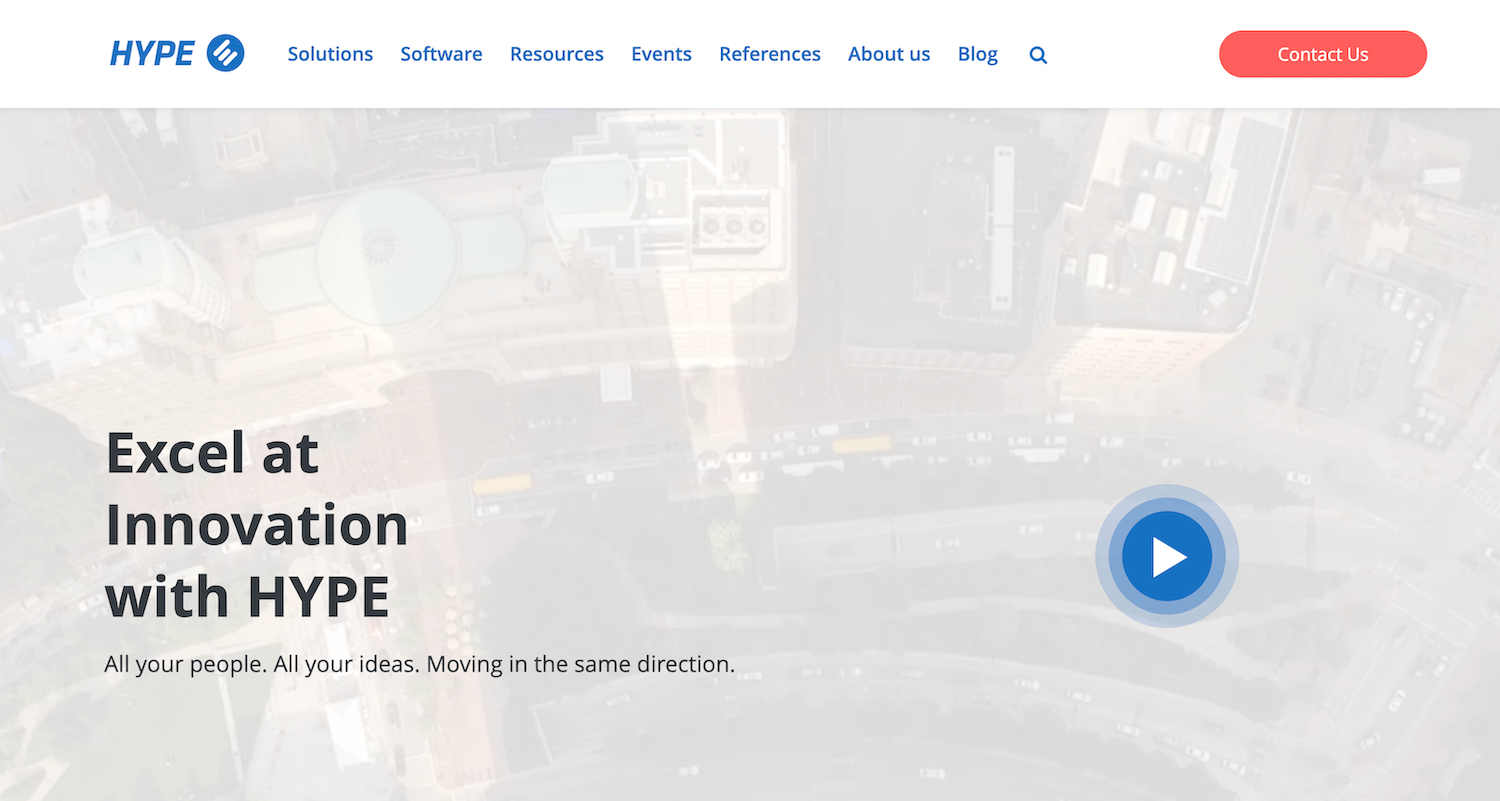
HYPE Innovation is an enterprise innovation management software that supports the continuous improvement of business processes, products, and services by allowing managers to create challenges, collect ideas, and use various workflows to validate and launch them.
HYPE Innovation has worked with companies like Toyota, Boeing, and Bosch to implement lean manufacturing and use methodologies like PDCA (Plan-Do-Check-Act) and Six Sigma to make small changes.
Features
HYPE Innovation's solution can be broken down into four components:
Strategy — Users can develop organization-wide roadmaps for testing and launching improvements.
Ideation — Users can take the results of a Kaizen analysis and ask people inside and outside the company to share ideas on where they think the business can remove bottlenecks, increase customer satisfaction, and improve quality management.
Partnering — Users can invite employees, stakeholders, and outside subject matter experts to assess and refine ideas before implementation.
Projects — Users can make incremental changes by creating tasks (MVP sketch, customer interviews, etc.) and calling teams within the company to complete them.
Additionally, HYPE Innovation offers consulting services, in which they meet with you and your team to develop an innovation strategy.
Pricing
HYPE Innovation doesn't publicly display pricing for its consulting services or innovation management platform. Users need to book a demo for a custom quote.
3. Wazoku
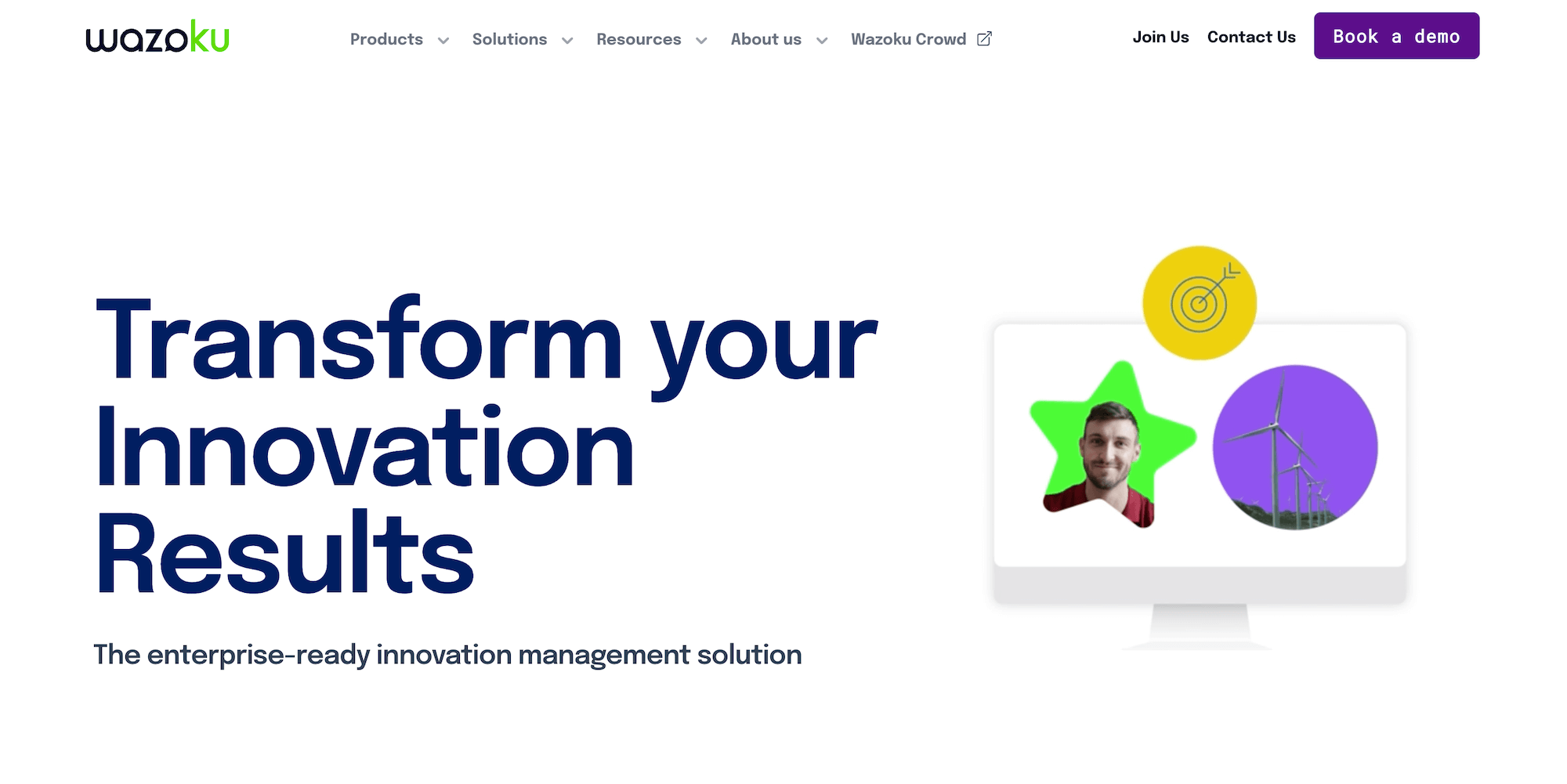
Wazoku is another innovation management software targeted at enterprise companies. It offers the tools innovation teams need to collect ideas for improving products, services, and current processes, test their potential impact, and launch them.
During onboarding, Wazoku's customer success team joins you on a call to get a high-level understanding of your innovation goals, such as what parts of the business you're trying to optimize. Then, the team tailors the software around these needs.
Features
All in all, Wazoku has six main features:
Internal innovation — Innovation managers can invite users to submit ideas on improvement initiatives and reward them for their efforts.
Co-creation — Innovation managers can have employees, stakeholders, and outside experts vote and comment on ideas, then work with others to improve them.
Open innovation — Innovation managers can gather insights via a public-facing hub called Wazoku Crowd.
Tech scouting — Innovation managers can learn about any new technologies related to their industry and partner with startups to co-develop solutions.
Insights & pulse surveys — Innovation managers can create personalized surveys and send them to employees, stakeholders, customers, and outside users to learn more about areas of improvement.
Innovation networks — Innovation managers can connect with teams all around the world to uncover and solve global problems. Innovation teams can submit their best ideas and Wazoku recognizes the winning ideas in their annual showcase.
It's worth noting that Wazoku features have quite the learning curve. However, Wazoku has training materials to help.
Pricing
Wazoku's website doesn’t have a pricing page. Users must book a demo to get a quote.
4. Brightidea

Brightidea is an innovation management platform that focuses on connecting users from all around the world. Employees, managers, stakeholders, and outside users can collaborate under one roof to submit, assess, validate, and launch ideas.
Brightidea caters to companies of all sizes, from startups to enterprise corporations. They do this by joining you on an onboarding call to discuss your company size and innovation goals, and then customizing their platform around these considerations.
Brightidea has worked with organizations like Cisco and Motorola to identify the root cause of overproduction and other inefficiencies and use continuous improvement models to make incremental improvements.
Features
These are the five key features of Brightidea:
Idea box — Users can support total quality management by asking employees and outside experts to submit ideas anytime.
Program — Users can create challenges and call the entire organization to submit ideas on management systems they believe the company can streamline.
Lab — Innovation departments can assess and validate the impact of idea submissions before launching them.
Transformation — Innovation departments can use Kanban boards to assign tasks to teams and implement changes that ultimately improve their bottom line.
Ecosystem — Users can find and connect with external resources to fuel continuous improvement initiatives; for example, a company could partner with an investor to launch an upgraded version of their product.
Pricing
Although Brightidea doesn’t display pricing plans on its website, some reviewers say their plans start at $59 per month.
5. Ideanote

Ideanote is an idea management platform that allows innovation managers to collect ideas from employees, stakeholders, customers, and other outside users on how the company can improve. Innovation managers can either create a challenge to gather insights on specific priorities or use Ideanote’s open idea collection feature to source ideas on more general topics.
Ideanote also has features to validate and implement ideas, meaning that innovation managers don’t have to export them into a separate project management tool to launch them.
Features
Ideanote’s idea management platform can be broken up into four features:
Employee engagement — Innovation managers can onboard users and train them on improvement techniques like DMAIC and Six Sigma.
Manage — Innovation managers can promote teamwork by encouraging everyone to submit ideas to improve process management, cycle times, and various other systems within the company.
Measure — Innovation managers can access detailed metrics to track the effectiveness of implementations.
Automate — Innovation managers can use improvement methods to implement ideas and notify teams and users when their input is required.
Pricing
Ideanote has three pricing plans:
The free plan hosts a maximum of 10 users.
The Business plan hosts a maximum of 1000 users and costs between $49–$859/month.
The Enterprise plan can host unlimited users and costs $2,899 per month.
Get Started
InnovationCast has helped companies of all sizes create effective innovation programs that allow them to continuously improve their product and service offerings and internal processes. Some of these companies include Visa, DHL, and ING.
You can book a free consultation with our customer success team, and we’ll give you a detailed demo of our innovation management platform.

